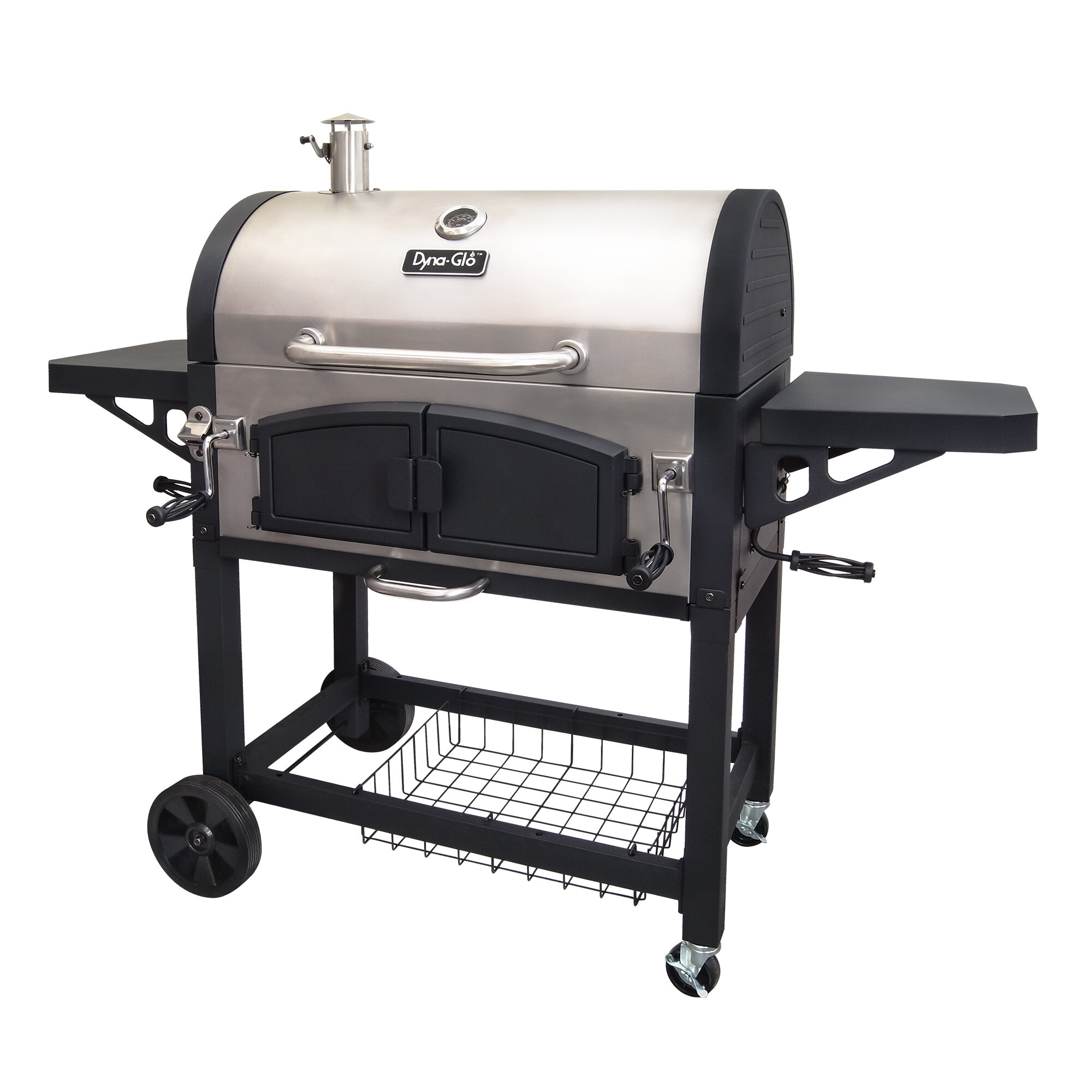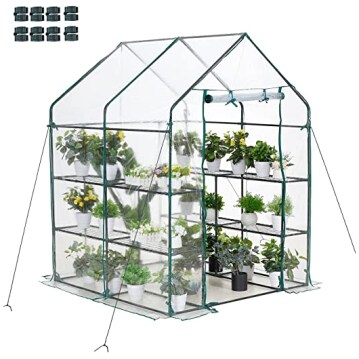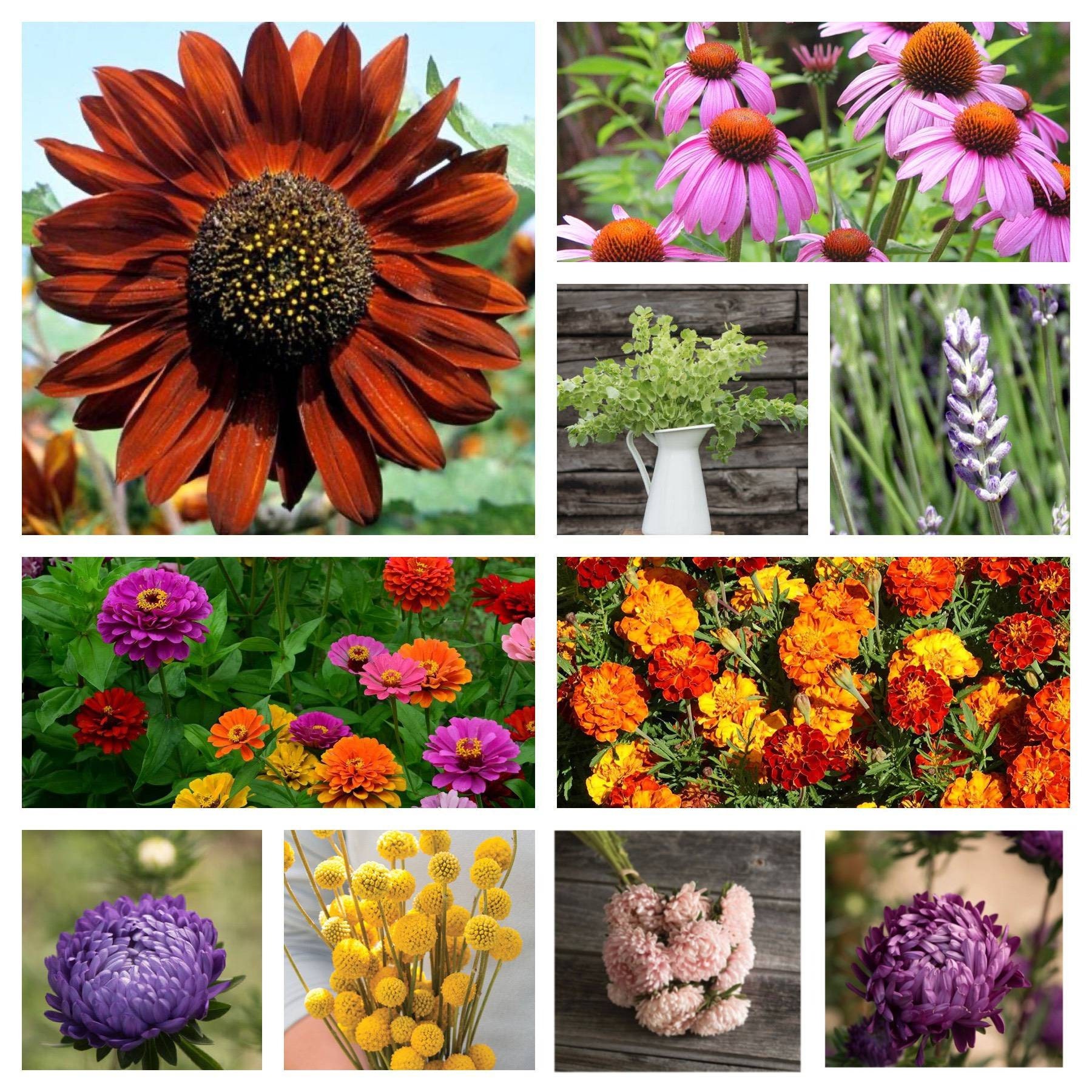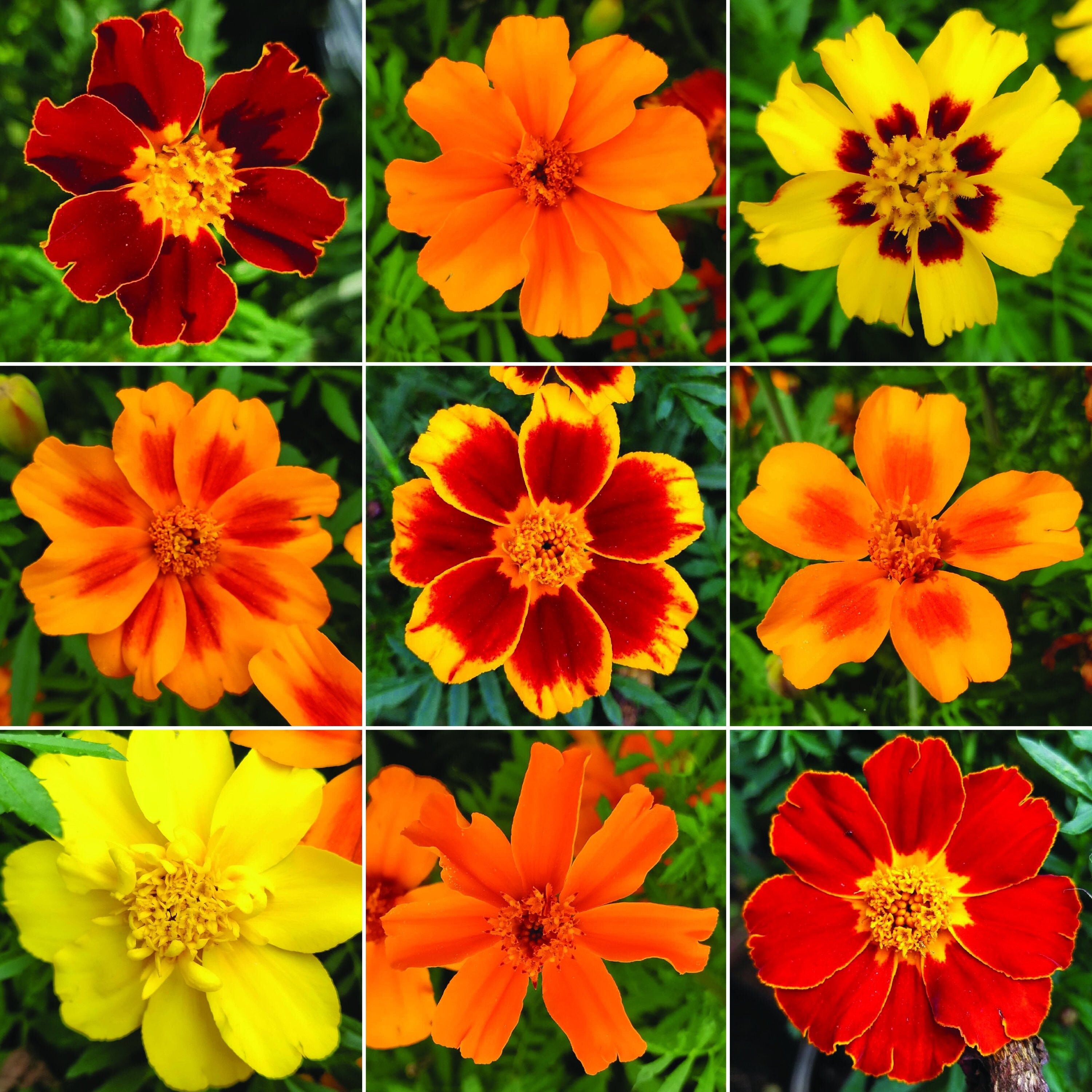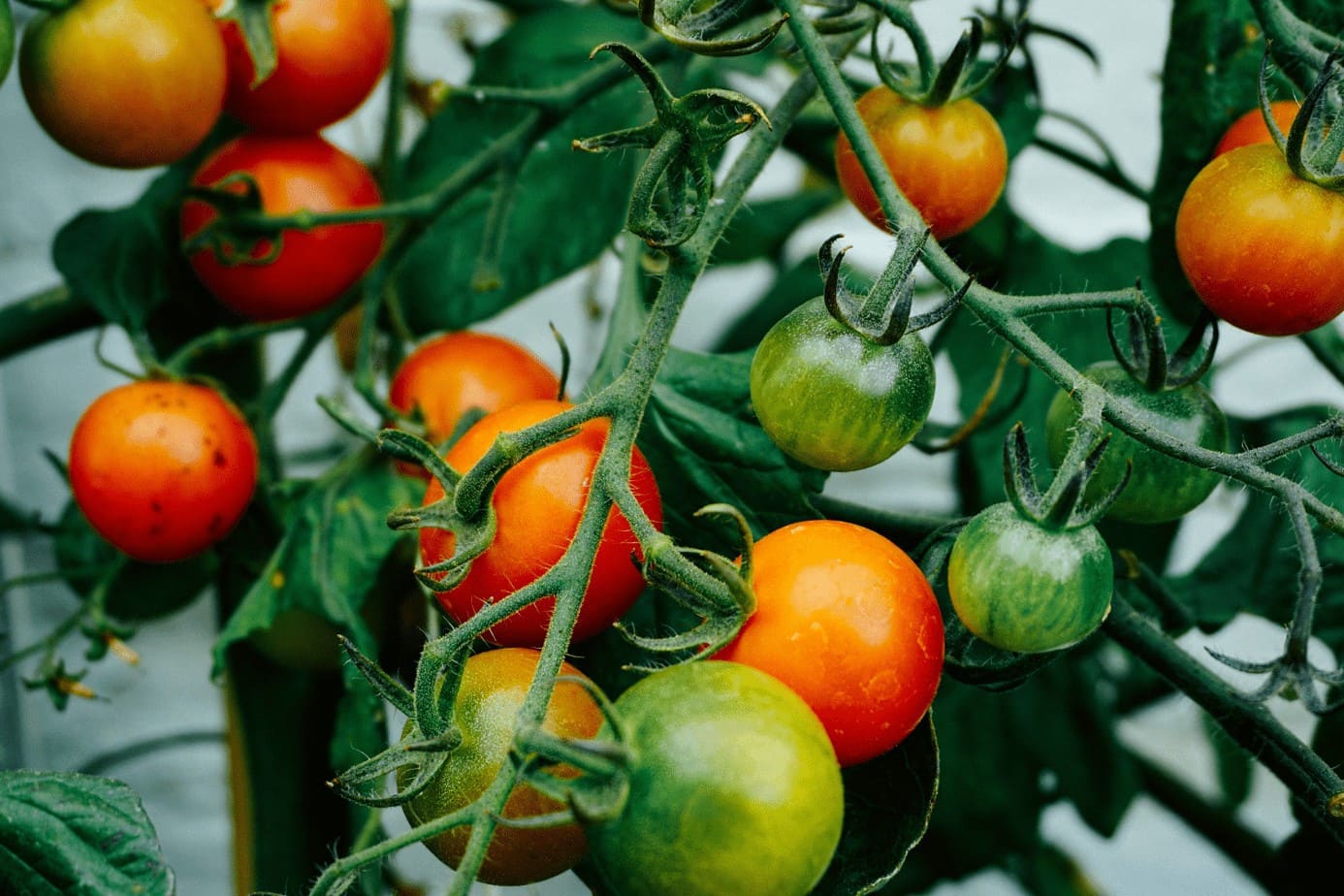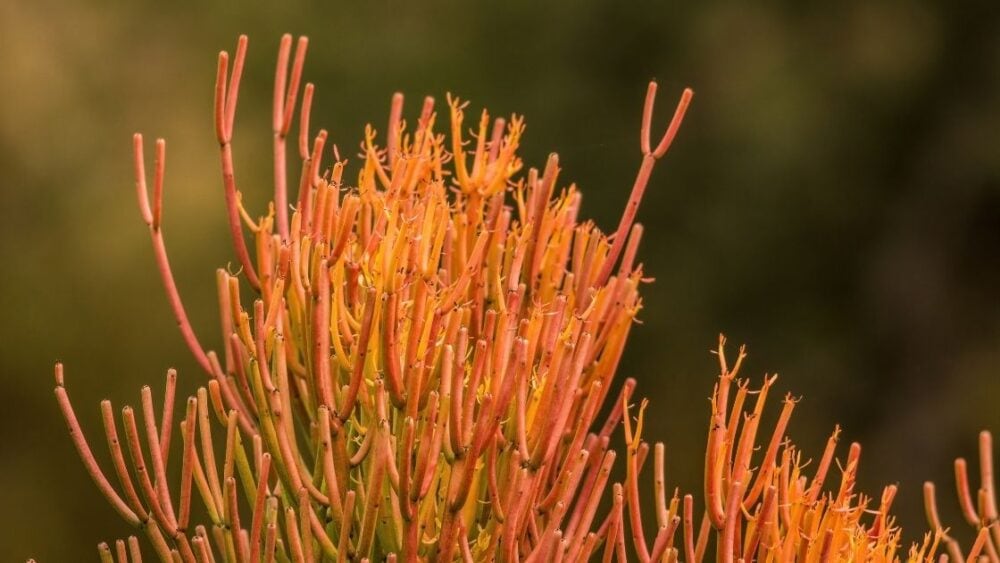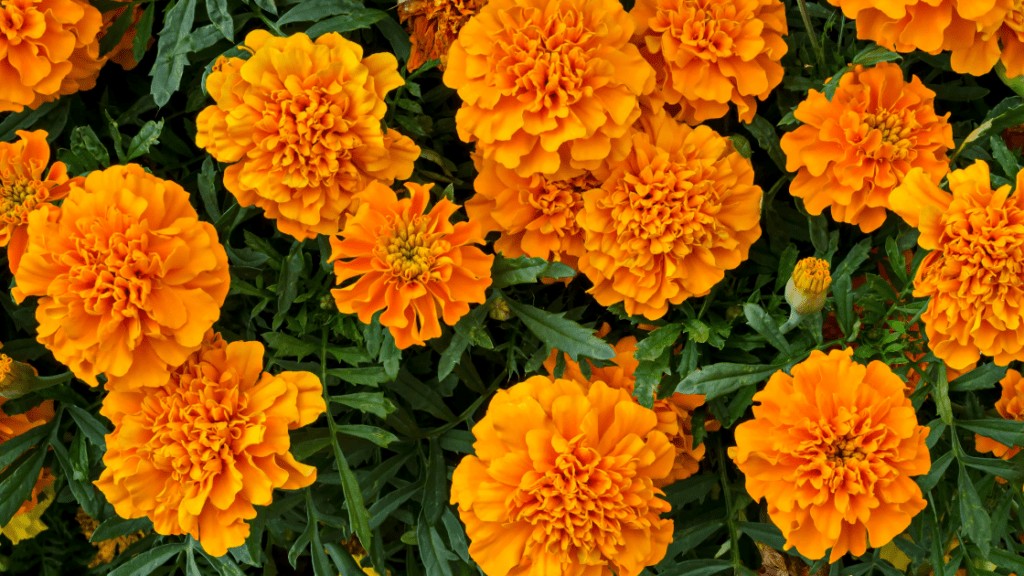
Marigolds are one of the most commonly grown ornamental garden plants – they flower generously throughout most of the year, up until late November. They can tolerate hot, dry summers, making them suitable for USDA zones 2 through 11. Although marigolds are a very low-maintenance plant, they can suffer from various pest and diseases.
They are usually grown as an annual plant, dying during the winter frosts, but re-growing from fallen seeds during the spring. In this article, we’ll explore the optimal growing conditions for marigolds, the various problems and diseases they are prone to and how to deal with them. We’ll also discuss what causes dying or wilting in marigolds and how to revive them if that happens!
What Factors Can Lead to Problems With Marigold Plants?
Most problems with marigolds are caused by the soil being too wet and soggy. In high humidity, fungal diseases and root rot set in, initially affecting the root system, but soon spreading to the foliage and leading to the leaves becoming brown or even black.
Browse our Affiliate Products
High nitrogen fertilizers can further exacerbate the issue by making the surface of the roots more permeable and are easily penetrated by fungus. The most common cause of fungal diseases affecting the foliage is overhead watering by using a sprinkler nozzle. Watering close to the soil and making sure that no water accumulates on the foliage usually solves this problem.
Common Problems and Diseases With Marigolds
There are several fungal and bacterial diseases that commonly affect marigolds. Most of them lead to the same symptoms – initially the root is affected, leading to root rot. This is difficult to detect at first, but may soon present with unexpected wilting of the foliage, despite generous watering. In fact, the more you water the worse the problem may appear to get.
This is because the wetness of the soil enables the fungus to spread more easily. The amount of oxygen in the soil is also reduced, partly because it’s being consumed by the fungus. Because the roots lack oxygen, they are not able to ‘breathe’ and manufacture energy for the transport of water, leading to wilting.
Since wilting is usually a symptom of the soil being too dry, gardeners may continue to water their plants even more, further worsening the problem.
Optimal Growing Conditions For Marigolds
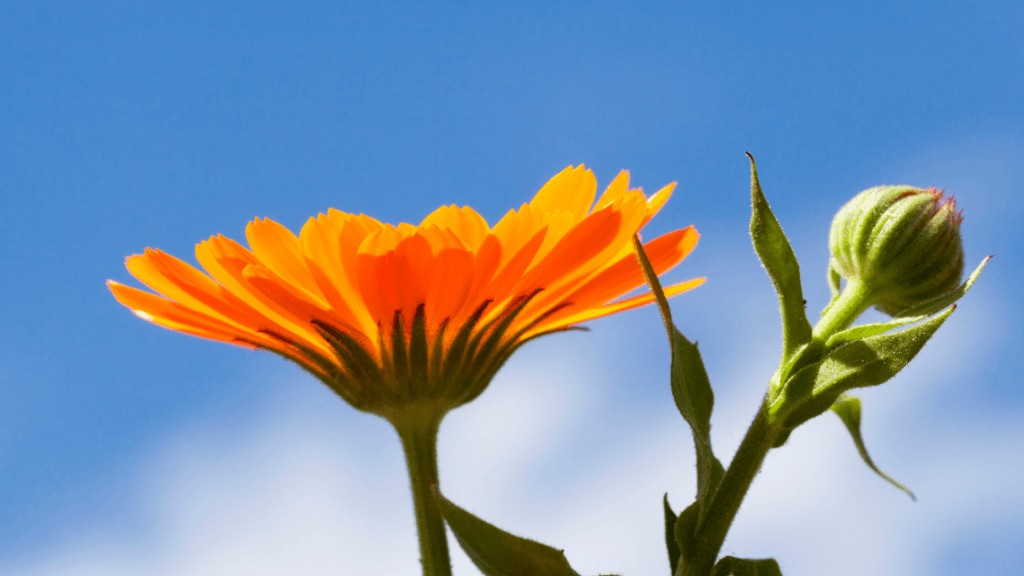
Marigolds are not difficult to grow and don’t require much attention. In fact, too much care, watering and fertilizing are often the factors that lead to too much humidity and to the development of fungal diseases. Let’s explore the optimal growing conditions in more detail:
How much sunlight do they need?
Like most herbaceous plants, marigolds like full sun and can survive very hot summers. They have a relatively deep root system and don’t have a high foliage area, which makes it easy for them to keep up with water demand even in very hot weather.
Marigolds grow best in full sunlight – not only does that allow for proper photosynthesis but it also ensures low air humidity, which is necessary to prevent fungal diseases and leaf spots.
Temperatures and USDA Zones
Marigolds are classified as suitable for USDA zones 2-11, which means they can grow almost everywhere. There’s some confusion as to whether marigolds are a perennial or an annual plant. There are both perennial and annual varieties – many artificially bred garden varieties are not very cold hardy and may instead grow as a self-seeding annual plant.
This means that the plant will die as the temperatures drop below 32F (0C), but the seeds it produces throughout the year will automatically fall on the ground and sprout as the temperatures pick up during the spring. Even perennial marigold varieties don’t live for very long, so seed propagation is unavoidable if you want to grow them in your garden for multiple years.
To see what growing zone you reside in click here. Planthardiness.ars.usda.gov/PHZMWeb/
What type of soil is required?
Marigolds require a high-nitrogen, nutritious soil that is very well-draining. Soil mixes with a lot of compost and sand work best, but any potting mix will work fine. Muddy soils high in clay don’t work well for marigolds and will eventually lead to too much water retention, too little aeration and fungal diseases eventually affecting the root system of the plant.
To read more about what soils to use, check out our article about soils here. Outdoorgardenaccessories.com/the-best-soil-for-all-types-of-gardens/
Proper spacing during planting
Spacing isn’t critical when planting marigolds – 10 inches of space between each plant is optimal, but eventually the plant will self-seed and start growing much more densely. When that happens, it’s important to not water on top of the canopy and to instead use a watering wand or drip irrigation.
Dense plantations of marigold which are heavily watered with a spray nozzle will eventually develop fungal pathogens because of the high humidity.
In addition, if you want more information on drip irrigation, you can read our article by clicking here. Outdoorgardenaccessories.com/drip-irrigation-pros-cons-and-garden-uses/
How much water do marigolds need?
Marigolds grow best when they are watered thoroughly but infrequently. Always let the top layer of the soil dry out a bit between each watering. Frequent, small amounts of supplementary watering will create a soil environment that favors the development of fungal diseases and root rot. The watering frequency is dependent on the type of soil used and very well-draining, high-compost soils without water-retaining additives like perlite may require more frequent watering.
Best conditions for flowering
Marigolds have a small leaf area, yet produce big flowers that require a lot of energy. This means that for optimal flowering, direct sunlight should be provided. Proper spacing is important – it allows sunlight to properly reach the lower leaves of the plant without getting blocked by other plants.
Densely growing plants, planted in a shady area will generally not flower well. Given plenty of sunlight and a nutritious soil, marigolds will flower all throughout the warmer seasons, up until the winter arrives.
Fertilization is recommended for perennial marigolds that re-emerge during the spring – use a high-phosphorus, medium-nitrogen fertilizer. If growing from seed, don’t fertilize during the first 2-3 weeks of growth, or you can damage delicate young root system of the plant.
Planting directly in the ground vs potting
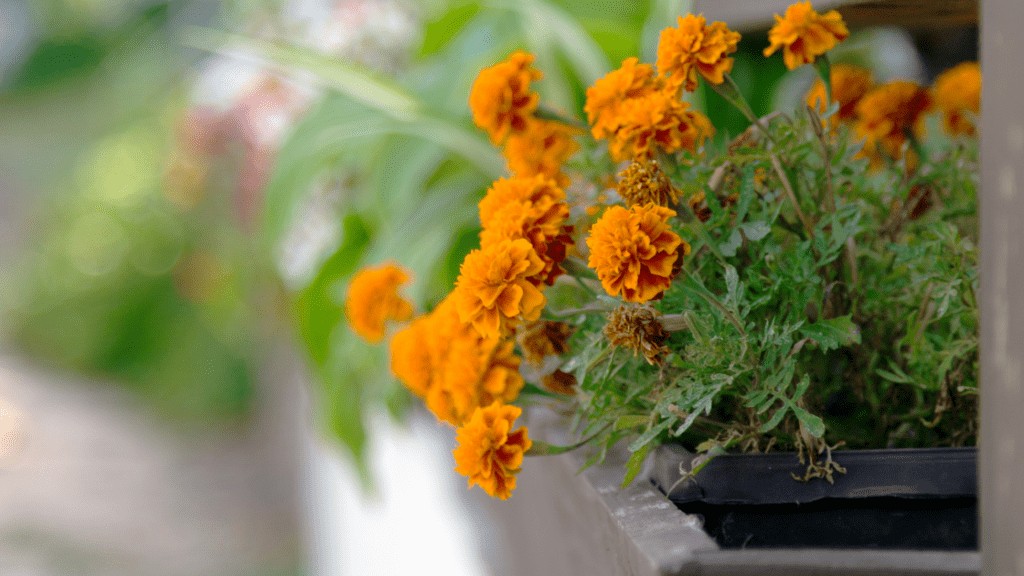
Planting marigolds in pots is not usually a problem – in fact, potted marigolds are much easier to water and the humidity of the soil can often be gauged much more accurately. Bringing the pots inside as winter arrives will enable the plant to survive for the next growing season and seeds can be collected from it, which can be sown directly in garden beds.
Marigolds don’t require large pots – 6-7 inches of soil depth is more than enough.
Also, check out out article on choosing the different kinds of pots for plants here. Outdoorgardenaccessories.com/what-is-the-perfect-pot-for-my-plants/
Do marigolds grow best indoors or outdoors?
Marigolds require full sun in order to thrive, making them unsuitable for planting indoors. However, it’s possible to grow them indoors in a small pot near a south-facing window or with an artificial LED light. That way, they will usually stay very short and flower year-round, producing very long-lasting flowers.
Amazon provides some awesome grow lights as shown below.
What To Do If Marigolds Are Dying or Wilting – Can You Revive Them?
Marigolds are often affected by Verticillium rot, as well as bacterial root rot. These pathogens damage the root of the plant and consume a lot of the available oxygen, depriving the roots of energy necessary for transporting water. It’s worth noting that wilting can occur even in the absence of a pathogen and can be caused just by over-watering in general.
In either case, the solution is the same – increase the time between each watering and water less. While the plant recovers and develops new, healthy root growth, the wilting can be corrected by pruning or by transporting the plant to a colder location. By removing as much as 60%-70% of the leaves of the plant, it’s water demand drops and allows the plant to survive while it grows new roots.
However, this strategy often fails to work and the fungus may still continue to grow rampant, despite the lower humidity levels. In that case, the affected plants will usually have to be uprooted and thrown away and the soil replaced before planting new marigold seeds.
If your marigold plant has died because of frost, it’s still possible to revive it and regrow it. This depends on the particular species of marigold – French and African varieties belonging to the Tagetes genus usually don’t store enough nutrients in their root system in order to allow for full regrowth of a plant that has been completely cut-down. The common marigold, however, which is the Calendula genus can be revived from a healthy root, because it’s a perennial plant.
How Can You Compensate for Unfavorable Growing Conditions?
Although marigolds are resilient plants, there isn’t much you can do to make up for lack of sunlight, lack of nutrition in the soil or the presence of pathogenic fungi in the soil. If your growing conditions are sub-optimal, your best bet is to choose a marigold variety that is more adapted to those conditions. However, all marigolds, much like most other garden plants require plenty of sunlight.
Do All Marigold Varieties Have The Same Growth Requirements and Experience The Same Problems?

All marigolds have very similar growth requirements. The only exception is that the french marigold (Tagetes patula) is usually a bit more resilient and can tolerate relatively soggy soil without getting infested with pathogenic fungi or bacteria.

The common marigold (Calendula officinalis) is actually a different genus compared to most ornamental marigolds (Tagetes spp.) grown in gardens, but they are still in the same family and have similar requirements.
Unlike the Tagetes species however, the common marigold is a perennial plant, which will regrow from the ground even if its foliage has been killed by winter frost.
Final Thoughts
Marigolds are easy to grow and self-seed on their own. If you give them plenty of sunlight and don’t water them excessively, they will easily self-establish in your garden and produce beautiful, large flowers all throughout all the warmer months, from spring to late November.
They can also be grown indoors in pots, but don’t expect them to grow quickly or become large. Most problems with marigolds are caused by soggy soils, which are easy to avoid by watering less frequently. Most marigolds can be revived after being cut-down, but this may not be the case with some specially-bred varieties belonging to the Tagetes genus – those will have to be restarted again from seed.

